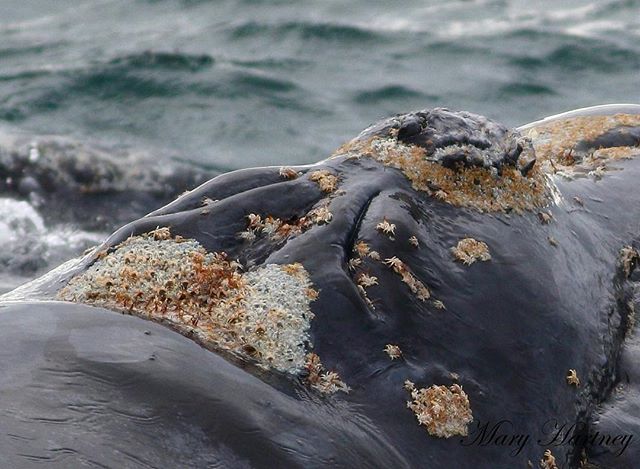Like any savvy sea-loving tourist, the North Atlanta Right Whale is one of the oceans’ most rare and endangered beauties. It travels great distances to visit our warm, emerald waters and has been spotted off the coast of Panama City Beach, just to our east!
Here are 10 BIG facts to get you acquainted with our gentle giant guests.
1. One of the most critically endangered marine mammals in the world, the North Atlantic Right Whale was hunted nearly to extinction by early American whalers and populations are still struggling to rebound, despite being protected since 1935.
2. Its name originated back in whaling’s heyday when whalers referred to them as the “right” whale to hunt, thanks to their bountiful blubber (a source of oil used for lighting lamps and lubricating machinery). The buoyant blubber also made the hunted victims float, easing the haul for whalers. Their slow-moving, shore-hugging tendency made them easier targets, as well.
3. Tell-tale characteristics of this school bus-sized–and then some–whale, tipping the scales at upwards of 100 tons and measuring up to 60 feet long, are its dual blowholes creating a V-shape on top of its head.

4. White calluses on its head are actually whale lice buried in the skin. They form a distinctive pattern akin to a fingerprint on each whale, making it possible for scientists to distinguish and identify individuals and follow their behavior patterns.
5. A right whale’s daily diet consists of over 2,500 pounds of sea-drifting zooplankton and other tiny organisms. They are filtered through the whale’s hundreds of baleen “teeth” (each measuring up to 8 feet long). These mustache-like fringes act as a strainer for the whale’s ever gaping mouth.
6. They can dive to depths of 1000 feet and can hang there for up to 40 minutes before resurfacing. Their lungs are fierce!
7. They migrate from cooler northern waters to the warmer Gulf of Mexico to give birth to their one-ton bitty babies.
Check out this video of a rare sighting in the neighboring Panama City Beach in January 2018:
8. Calf gestation is 12-14 months. The calves remain with mom for an additional 8-17 months to shadow her and nurse.
9. Doting mother whales have an endearingly strong bond with their babies. They stick together “right” tight.
10. There are fewer than 500 left in existence. Due to ship collisions, fishing gear entanglement, and global warming, the friendly giant’s once lifetime span of around 70 years is shortening. And because there have been no recent calf sightings, scientists are increasingly worried about impending extinction.
Visit the WDC (Whale and Dolphin Conservancy) to see how you can do right by helping the right whale!
 CHRISTY (CHICK) HUGHES is a freelance writer and a respiratory therapist living in South Walton. She and her husband moved to the beach in 2000. One sunset…and the couple never looked back. Find her at her blog chickhughes.com.
CHRISTY (CHICK) HUGHES is a freelance writer and a respiratory therapist living in South Walton. She and her husband moved to the beach in 2000. One sunset…and the couple never looked back. Find her at her blog chickhughes.com.






 North Atlantic Whale. Photo Credit: Brian J Skerry, National Geographic
North Atlantic Whale. Photo Credit: Brian J Skerry, National Geographic 
 CHRISTY (CHICK) HUGHES is a freelance writer and a respiratory therapist living in South Walton. She and her husband moved to the beach in 2000. One sunset…and the couple never looked back. Find her at her blog
CHRISTY (CHICK) HUGHES is a freelance writer and a respiratory therapist living in South Walton. She and her husband moved to the beach in 2000. One sunset…and the couple never looked back. Find her at her blog 





